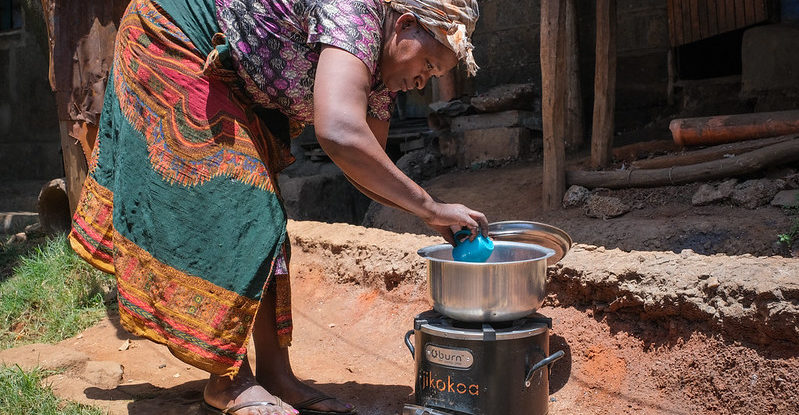
From stoves to open fires, gas to electric cookers and everything in between: what families cook on — and why — around the world is no straightforward issue.
Multiple cultural values and preferences are driving factors behind cooking choices – including income level, age, availability of fuel, gender, price and efficiency, a new World Bank report states.
Yet some 3 billion people — almost half of the global population— have no clean, sustainable energy for cooking. Household air pollution accounts for some 4 million premature deaths each year, mostly affecting women and children.
Addressing energy poverty is one of the U.N. Sustainable Development Goals (SDGs), which are 17 targets designed to improve livelihoods worldwide by 2030. SDG 7 aims to ensure access to affordable, reliable, sustainable and modern energy for 3 billion people.
At issue for scientists with the Center for International Forestry Research (CIFOR) and World Agroforestry (ICRAF) who collaborated on the World Bank report, is the growing pressure on forest resources. About 2.7 billion people depend on solid fuel for cooking and heating, with most of that energy coming from woody biomass.
But findings in the report highlight that transitioning from one fuel to another is about much more than the fuel itself. For example, fuel-efficient stoves will only be used if communities perceive fuel-efficiency as an added benefit.
“We’ve found that families tend to view project-distributed free fuel-efficient stoves as gadgets which don’t service traditional cooking needs,” said Mary Njenga, a bioenergy research scientist at ICRAF and a contributor to the report. “So, they still keep their traditional open fire, and the two cooking appliances will run concurrently to serve different purposes.”
This practice is known as “stacking,” a trend whereby households use several cooking methods for different reasons. It points to the need for much greater context-specific understanding of factors influencing the transition to cleaner, more sustainable cooking services, the scientists say.
As a result, a full transition to cleaner and more sustainable energy sources must be accompanied by demonstrated clear and practical advantages. “One stove wouldn’t work for everyone, and factors like income don’t by themselves explain why families adopt some types of energy,” said Njenga.
“What the report highlights is that we need a more holistic understanding of energy consumption and provision, from growing and managing trees in a more sustainable way, through to more efficient cooking which is better for the environmental and human wellbeing, all couched in the wider socio-cultural context,” she added.
A more holistic approach to energy transition, which takes every stage of the energy production processing and consumption into account, is required, she added. “Growing and managing trees can be sustainable, but if the firewood is taken home and used in inefficient cooking appliances, what is the environmental benefit there?”
Life-cycle assessments of cooking energy and technology that take into account environmental, health and socio-economic benefits, tailored to the needs of communities, is what is now required, she added.
“Whether large or small-scale, technology roll-out must be adapted to different needs,” said Phosiso Sola, who conducts research into natural resource governance and bioenergy at ICRAF. “No matter how much you increase income or education, some aspects of energy preferences don’t change.
“Education is a driver; income is a driver. But wood fuel will not always disappear from the house, because certain cooking preferences or priorities are unlikely to change, leading to use of more than one cooking energy source in a household.”
The researchers said the report findings underline that switching to energy sources which are clean and more sustainable must be done with end users to find scalable solutions that are adaptable to social, environmental and economic conditions.
“Enabling policy frameworks could expedite this transition,” Sola said. “If charcoal is available and cheap, and electricity is scarce and expensive, it’s no wonder that people will cook with charcoal. Incentives, and disincentives to transition to more sustainable energy are critical are factors here, too.”
The report also flags bigger questions, they said. For example, one study in the report highlighted that in Kenya, building an outdoor kitchen to alleviate smoke in some communities was a higher priority among women than buying a stove, which would involve male authorization and capital.
They called for more specific research to understand the underlying factors driving the transition to cleaner and more sustainable energy sources among communities. Among them, taking gender considerations into account, ensuring that men as well as women will benefit.
The work by CIFOR and ICRAF on more sustainable wood fuel value chains is part of the project Governing Multifunctional Landscapes in sub-Saharan Africa, financed by the European Union.
We want you to share Forests News content, which is licensed under Creative Commons Attribution-NonCommercial-ShareAlike 4.0 International (CC BY-NC-SA 4.0). This means you are free to redistribute our material for non-commercial purposes. All we ask is that you give Forests News appropriate credit and link to the original Forests News content, indicate if changes were made, and distribute your contributions under the same Creative Commons license. You must notify Forests News if you repost, reprint or reuse our materials by contacting forestsnews@cifor-icraf.org.